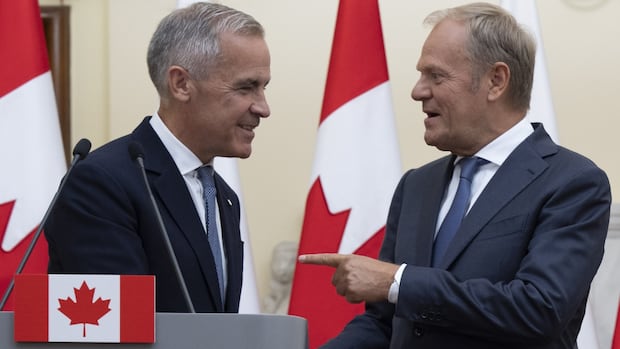Prime Minister Mark Carney and Poland’s Donald Tusk met in Warsaw last week, highlighting the stark contrasts in defense spending priorities between the two countries. Carney commended Poland’s strong commitment to NATO and defense expenditure targets, noting that Canada aims to quadruple its defense spending by the end of the decade, albeit lagging behind Poland’s current levels.
While Poland has exceeded NATO’s previous benchmark by allocating 4.7% of GDP to defense, Canada strives to reach the 2% threshold by next year. The difference in approach raises questions about the feasibility and desirability of emulating Poland’s model.
Canada’s defense strategy, including a plan to increase defense spending to 5% of GDP over the next decade, comes with significant financial implications, estimated at up to $150 billion annually. Catherine Godin, Canada’s ambassador to Poland, emphasized the distinct priorities of the two countries, with Poland prioritizing security and defense over health and education.
Despite public support for increased defense spending, the potential trade-offs remain unclear. The upcoming federal budget may signal a shift in spending priorities, with Defense Minister David McGuinty highlighting the evolving geopolitical landscape and the need for a national consensus on defense investment.
Poland’s rapid rearmament, facilitated by state-owned defense industries and strategic partnerships with the United States, contrasts with Canada’s more diversified procurement approach. The decision to review major defense purchases, such as the F-35 fighters, underscores the complexity of balancing national interests, political considerations, and military requirements in defense procurement.
As Canada navigates its defense modernization efforts, the focus remains on equipping the military with the best available technology, regardless of its origin. The evolving defense landscape necessitates strategic decision-making to ensure national security and operational effectiveness.
Prime Minister Carney’s commitment to economic growth and fiscal responsibility aligns with Canada’s defense modernization goals, emphasizing the need for a balanced approach to defense spending and procurement decisions.



